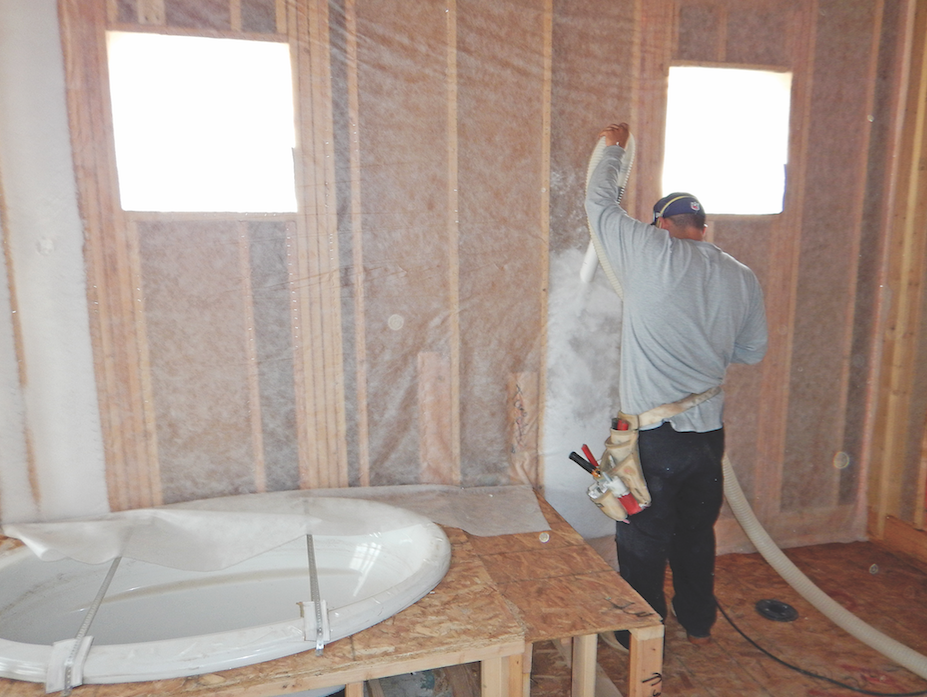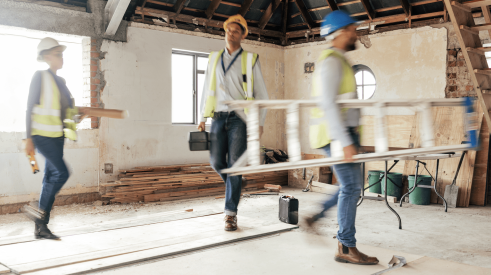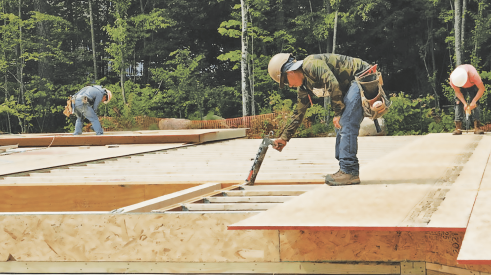The vast majority of production builders use batt insulation in the walls of the homes they construct, but there’s a strong case to be made for blown fiberglass. This is especially true for builders working under the 2015 energy code, which requires that homes be evaluated according to RESNET’s Home Energy Rating System (HERS).
Blown insulation makes it much easier to earn a Grade 1 HERS rating. That’s because insulation can only achieve its nominal R-value when it fills all framing cavities, including hard-to-reach and sometimes hidden gaps and voids. However, we rarely see a home with batt insulation that doesn’t fall short. That’s because installers tend not to take enough time to carefully cut and fit batts around wires, pipes, and other obstructions, and they often don’t get enough insulation into those hard-to-reach spots.
Many builders are already using blown insulation for the ceiling plane between the conditioned space and an unconditioned attic. In homes with complex rooflines, the attic will likely have a lot of hard-to-reach areas, but even the simplest attic will include recessed lights, exhaust fans, electrical wiring, and other obstructions that are difficult to insulate around. Blown fiberglass has proven faster and more effective than traditional batts in the attic, so why not consider it for the walls as well?
With blown fiberglass, a skilled installer can easily fill in voids and around obstructions. And while material costs tend to be slightly higher than with batts, the fact that you can insulate more houses in a day and achieve a consistent level of performance can make installed costs comparable. There are also increased benefits from an acoustical perspective, due to the uniform and increased density of a quality application.
Blown-in Insulation: Take Care During Installation
That said, blown insulation isn’t a panacea. For instance, while filling all voids reduces air leakage, fiberglass won’t completely stop it. In other words, you should use the same air-sealing protocols for blown-in fiberglass as you use with batts. It’s also crucial to choose an experienced installer. Fiberglass blowing fiber is blown through a hose attached to a blowing machine. It is blown through netting attached to the studs.
It’s possible to degrade performance by not using properly calibrated equipment, but a skilled installer will know how to adjust the equipment to deliver the full R-value and must follow all manufacturer recommendations on equipment and installation practices. This will ensure that the insulation flows around all obstructions.
How to Address Common Blown-in Insulation Installation Issues
While a quality batt installation is not impossible, the captions and photos below illustrate some common issues associated with poor-quality batt insulation that can easily be addressed by a quality netted and blown insulation job.
Deep wall framing, such as a transition from 2x4 to 2x6 wall framing, requires a thicker batt to ensure it fully fills the cavity—something that is still overlooked by some builders.
Electrical boxes obstruct the continuity of the insulation, and care must be taken to cut and fit insulation around and behind the box to ensure there are no gaps or voids.
Pipes and wires can compress batt insulation causing voids in the cavity if care is not taken to cut and fit the insulation around these horizontal obstructions.
Odd-size cavities, such as in corners or the spaces adjacent to windows or partition walls, require batts to be expertly cut to size to ensure proper fit.
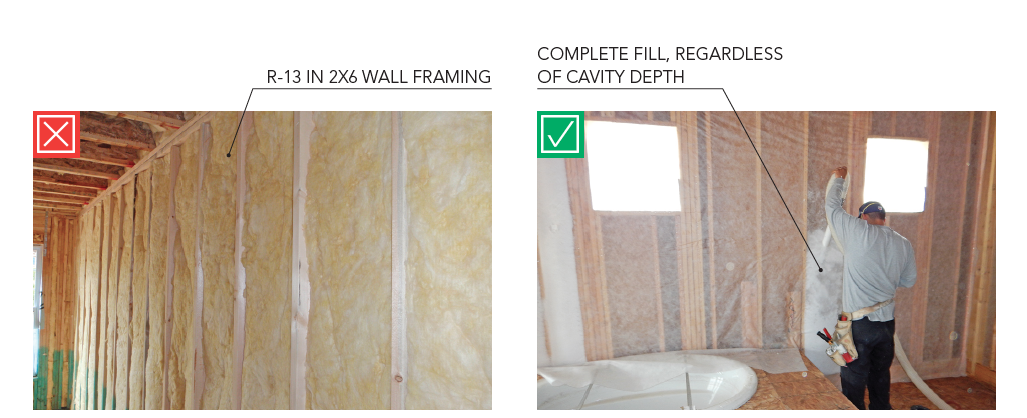
Inadequate insulation in a 2x6 wall cavity can be rectified with blown insulation.
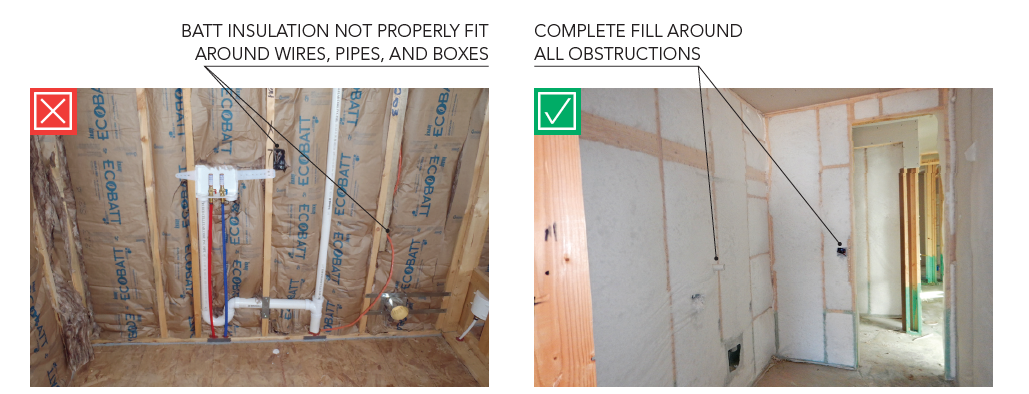
Blown insulation ensures proper fill around pipes, wires, electrical boxes, and any other obstructions.
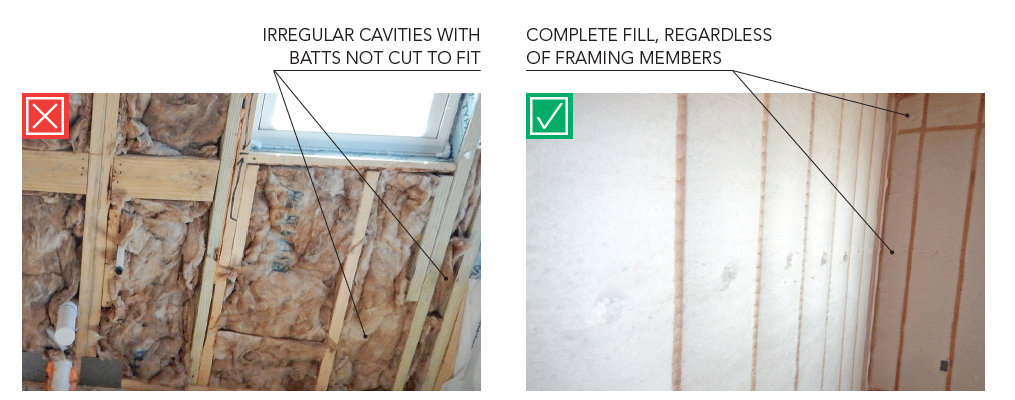
Odd-size cavities can be insulated with consistency using blown insulation (all images courtesy IBACOS).
Richard Baker is program manager of the Builder Solutions team at IBACOS.
Advertisement
Related Stories
Construction
Proven Ways to Improve Jobsite Productivity
Consider these solutions for reducing cycle time, hard costs, dry runs, rework, miscommunication, and overall inefficiencies on the jobsite
Quality Matters
5 Ways to Silence Squeaky Floors
Take these tips to heart to deliver quiet floors and satisfied homeowners
HVAC
Why Pay Attention to HVAC Faults? Energy Efficiency, for One Thing
HVAC faults usually go undetected, which is a problem, since they can severely compromise a home’s energy efficiency


